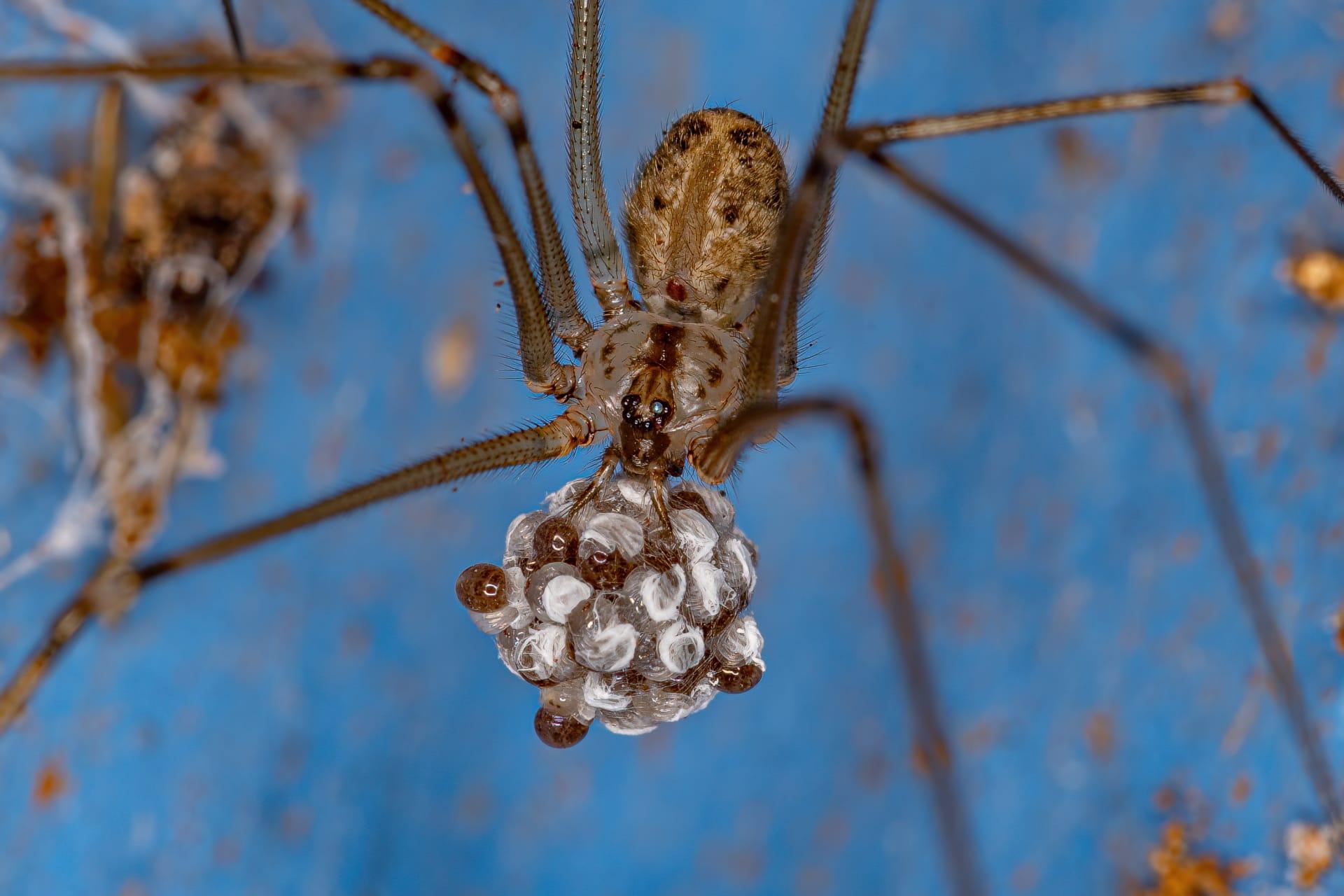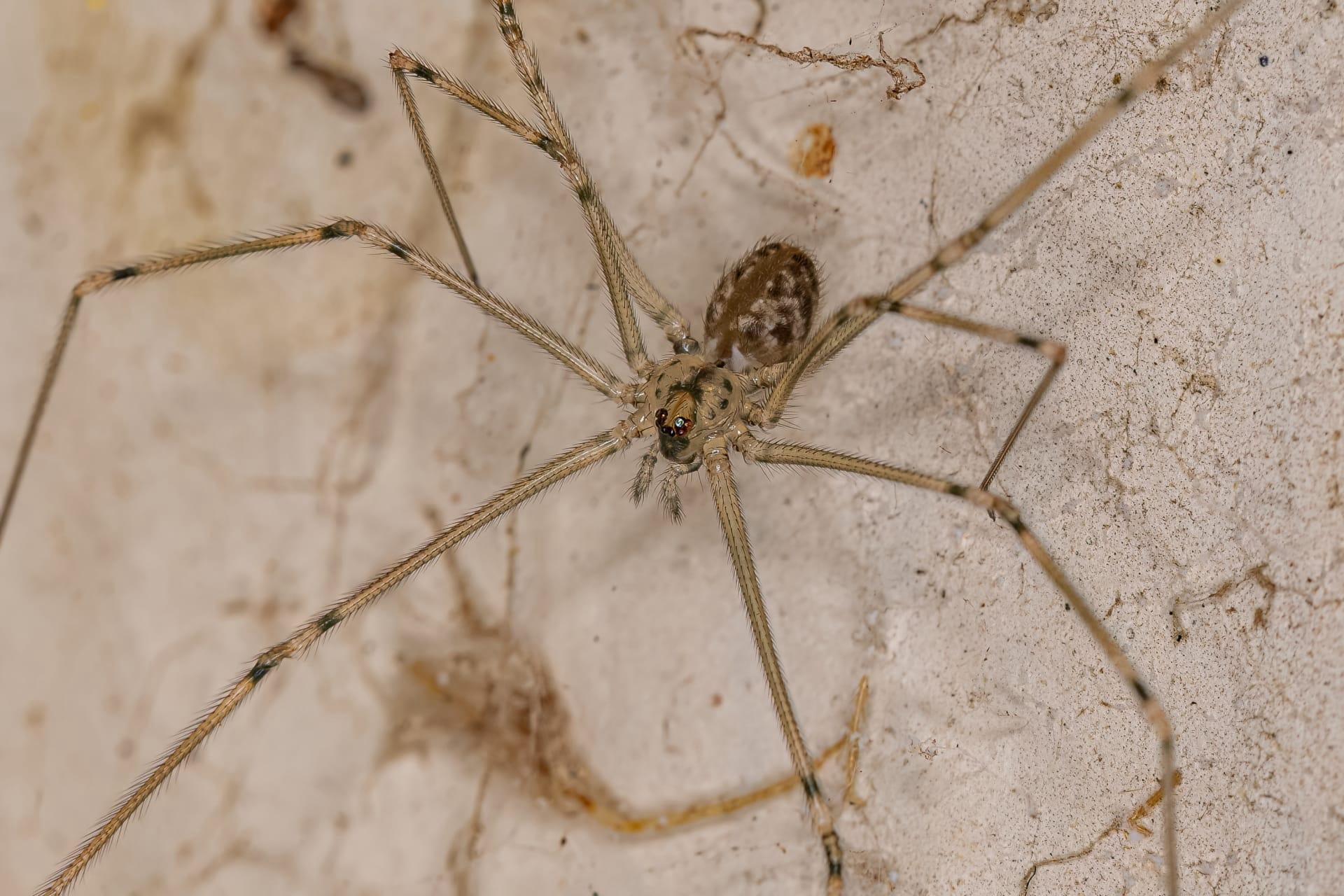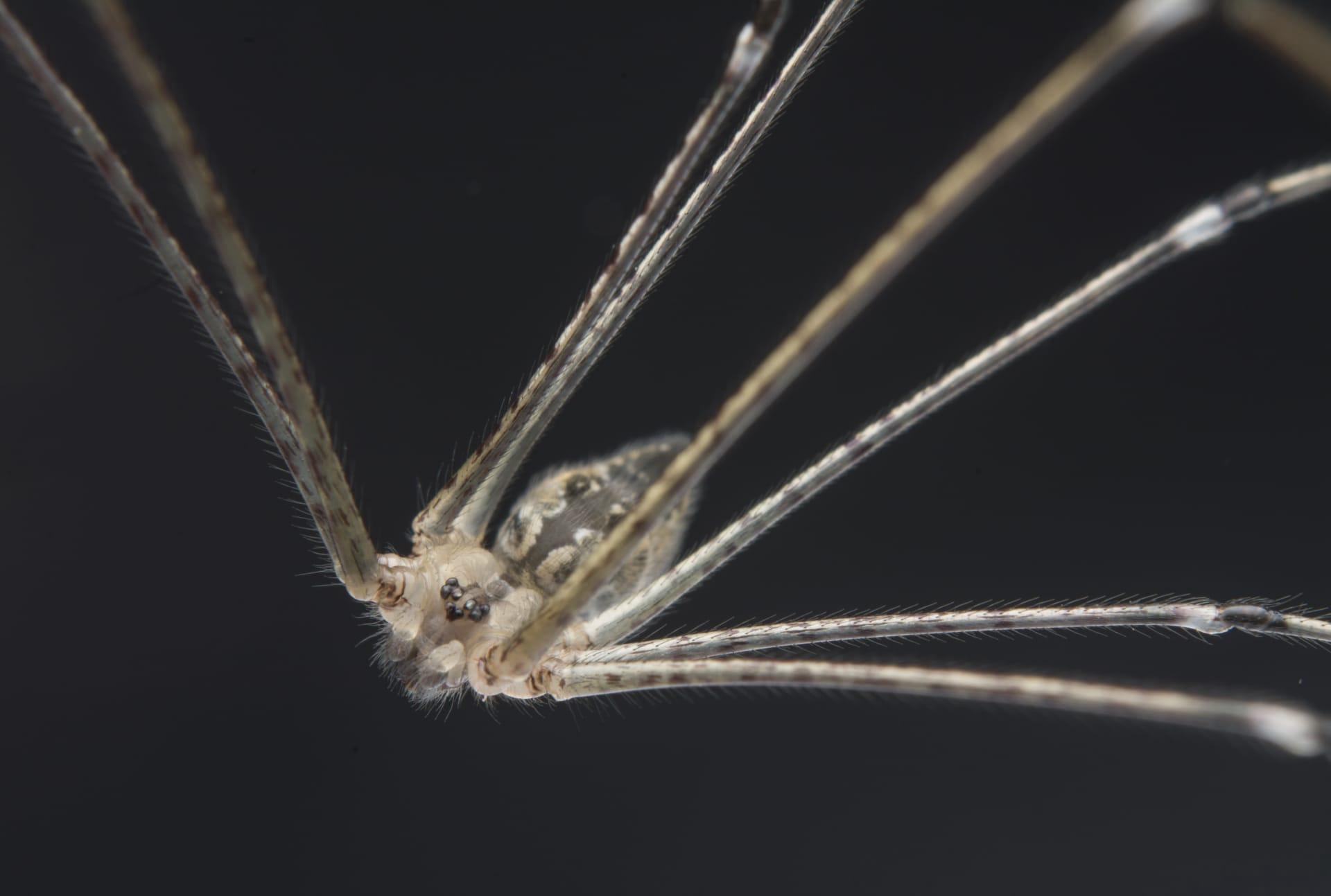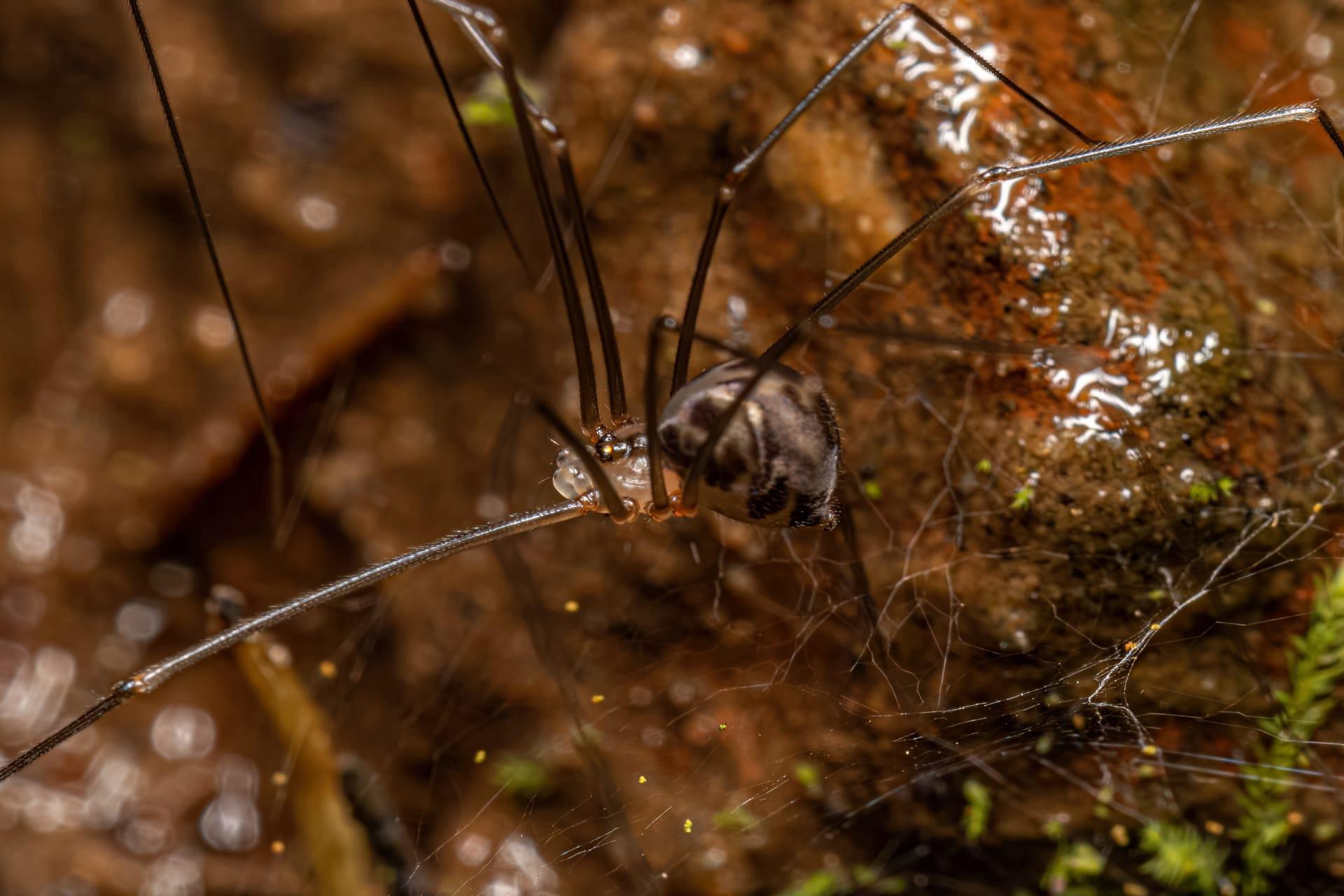1
Cellar spiders, often found in dark, damp environments, exhibit a fascinating behavior known as 'vibrational mimicry'. When threatened, they rapidly gyrate their bodies, creating a blurry, vibrating effect. This unique defense mechanism, involving up to 400 body oscillations per minute, confuses predators and aids in their escape.
Another intriguing aspect of cellar spiders is their longevity and reproductive habits. Females can live up to 2 years, a notable lifespan for spiders. They lay multiple egg sacs containing up to 60 eggs each during their lifetime. The mother carries these sacs in her jaws until the spiderlings hatch, showcasing a rare instance of maternal care in the spider world.

2
Cellar spiders have an exceptional talent for web-building. Unlike many spiders that rebuild their webs daily, cellar spiders continually add to their webs, creating extensive, complex structures over time. These webs, often found in house corners, can reach up to several feet in diameter, becoming a network of intricate patterns.
Interestingly, cellar spiders are also known for their cannibalistic behavior towards other spiders. They invade existing webs of different spider species, using their long, slender legs, which can span up to 2 inches, to overpower and consume their web's original creator. This predatory behavior is a survival tactic, allowing them to dominate and claim new territories.

3
Cellar spiders possess a unique physiological trait: their ability to detach a leg. When caught by a predator, they can self-amputate a leg to escape, a process known as autotomy. This leg, however, does not regenerate, a trade-off for their survival.
Another remarkable fact about cellar spiders is their contribution to pest control. They feed on common household pests, including flies, mosquitoes, and moths. Their presence in homes, though often unwelcome, actually serves as a natural pest deterrent, making them unsung heroes in maintaining a pest-free environment.

4
Cellar spiders are known for their unusual mating ritual. Males perform a unique courtship dance, vibrating their bodies and palps to attract females. This dance not only signals their interest but also helps in distinguishing them from prey, reducing the risk of being attacked by the female.
These spiders also exhibit a peculiar feeding method known as 'regurgitative feeding'. When feeding their young, adult cellar spiders regurgitate partially digested food. This behavior, rare among spiders, ensures the young receive the necessary nutrients for growth and development, highlighting a communal aspect of their behavior.

5
Despite their common name, cellar spiders are found in a variety of environments beyond cellars. They adapt to various habitats, including caves, forests, and human dwellings. Their adaptability is a testament to their survival skills, thriving in conditions ranging from damp darkness to dry domestic settings.
Lastly, cellar spiders are often mistakenly identified as 'daddy longlegs' or harvestmen. However, they are distinctly different creatures. Cellar spiders belong to the order Araneae, making them true spiders, while 'daddy longlegs' are part of the order Opiliones and are not spiders at all. This common confusion underscores the importance of understanding the subtle differences among similar-looking arachnids.